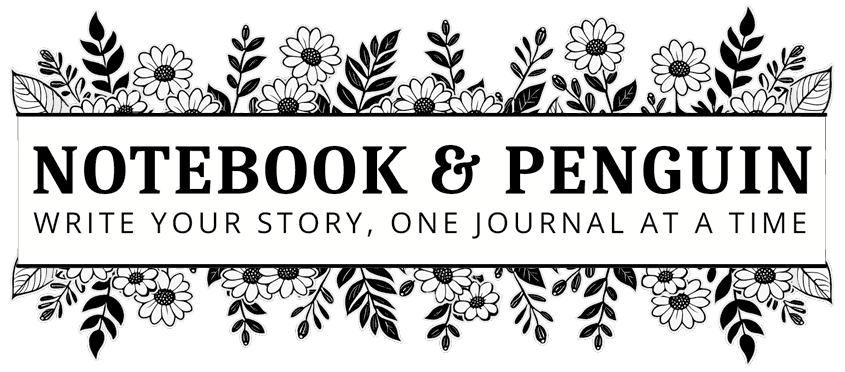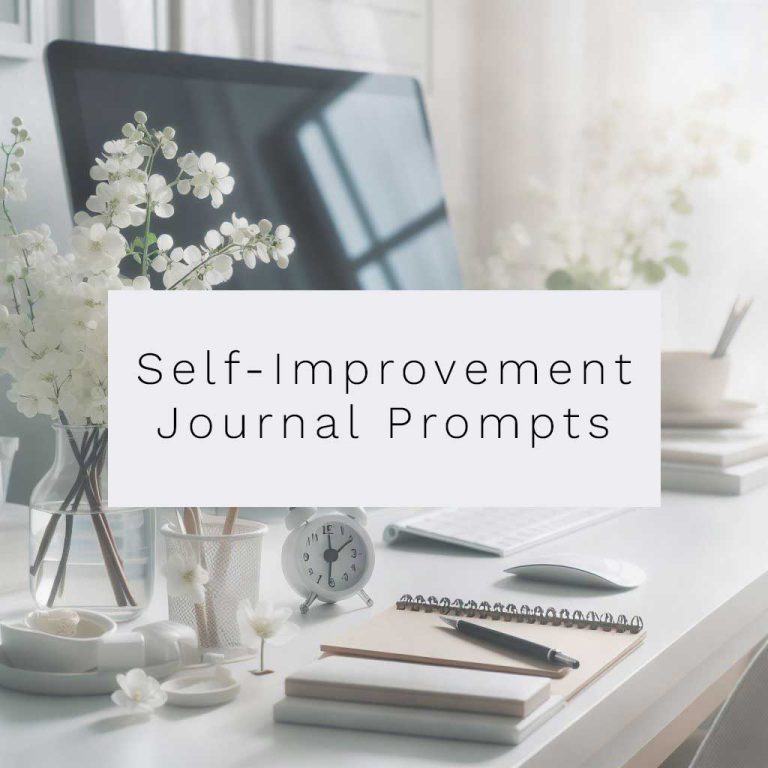

What Is Bullet Journaling & How Does It Work?
If you are a busy person, I’m sure that you have at one time or another struggled to stay organized and on top of your tasks. If you are anything like me, you may have tried countless productivity systems and apps, with most of them falling short of what you need.
If this is the case then bullet journaling might be for you!
I first stumbled upon bullet journaling a few years back when I was feeling particularly overwhelmed by life. I was juggling so many things that it felt like I was getting bogged down and even worse, losing control. I’d always enjoyed journaling but I never thought of using it to simplify my life and get organised. I was intrigued by the simplicity and flexibility of the system so I decided to give it a try.
At first I was skeptical but after I started using it I was amazed at how much more organized and focused I felt. But what really made bullet journalling stand out for me was the ability to customize it completely to my needs. As a creative person, I could express myself and at the same time track my progress and reflect on my accomplishments which was a great motivator.
Since I started bullet journaling I’ve noticed a real improvement in my productivity and stress levels and I feel more in control of my day. It has also helped me to become more mindful and present as I take time out of each day to reflect on my progress and my plan for the next day.
Related: 34 Different Types Of Journals – Find The Best Journaling Style For You
In this article, I’ll share what bullet journaling is as well as the benefits of using one. I’m confident that a bullet journal can also help you to simplify your life and get more organized. So if you are a beginner to bullet journaling then this article is for you!
What Is Bullet Journaling?
Bullet journaling is a flexible and customizable system that allows you to organize your time, tasks, goals, and thoughts. It was developed by digital product designer Ryder Carroll who originally designed it as a personal tool but it has since evolved into a comprehensive system since then.
In a nutshell, bullet journaling is a journaling style where you write down tasks, goals, and ideas using bullet points, rapid logging, and customizable spreads (don’t worry, we’ll cover these shortly). The system is designed to be very personal and adaptable so you will be able to create a unique journal that is personalized to your needs, personality, and style.
The best part about bullet journaling is that, unlike other productivity systems, bullet journaling doesn’t tell you how to organize your life. Instead, it gives you the freedom to create a system that works for you as an individual. Want to use different colors for different tasks? Go for it! Want to add motivational quotes or doodles, no problem!
Make it your own, make it authentically you!
The Basic Building Blocks Of Bullet Journaling – How Does Bullet Journaling Work?
Now that we’ve covered what a bullet journal is, let’s get into the nitty-gritty details of how bullet journaling works and how you can use it to take control of your tasks, goals, and life.
Here we will go over the basic components of a bullet journal which will hopefully give you a really good understanding of how to get started.
Index
The index of your bullet journal is found at the front of the notebook. It is like a table of contents where you have a list of all the pages in your bullet journal – including page numbers and a brief description of what is found on each page.
If you have specifically bought a bullet journal then you should find that it already comes with page numbers. If not, then you can simply number your pages as you go along.
The index allows you to organize your pages and to find what you are looking for quickly and easily.
Key
Your bullet journal key is a page where you list symbols and abbreviations that you use in your journal along with their meanings. For example, you could include the following in your key:
- Tasks
- Events
- Meetings
- Urgent
- Important
- Note
- Inspiration
Future Log
Your future log is a page that gives you an overview of upcoming events, appointments, goals, and tasks for future months – when you need to add something to your bullet journal that falls outside of your current month, it can be added to your future log.
Monthly Spread
The monthly spread page gives you an overview of the month and a place where you can write down your goals, appointments, tasks, and events for that month.
Some people like to include a calendar view on this page while others like to keep it simple by just including a basic calendar that looks like a list. In the original bullet journal system there were two pages included in the monthly spread:
Calendar page
The calendar page is where you will record your events and appointments for the month. It is like a convenient snapshot for the month.
Tasks Page
This is where you will have your monthly tasks list or to-do list. It will include new tasks for the current month as well as tasks that you may have carried over from the previous month(s).
Daily Spread
The daily spread is where you will write down your daily schedule along with space to write down your tasks, appointments, and notes. You will use your daily spread as your day progresses adding to it and updating it as you wish.
You can also create a weekly spread if this suits you better.
Migration
Migration is the process of moving information from one month to another after reviewing whether you need to complete, reschedule, or remove a task. This could include things like:
- Appointments and events
- Tasks and to-do lists
- Notes and ideas
- Goals and objectives
Migration is usually done at the end of the current month but this is completely flexible depending on your needs or the tasks you need to complete.
Collections
Collections are pages that are made up of groups of related ideas or topics. They can include anything you would like to include in your bullet journal. They can include:
- A list of books to read
- Project planning pages
- Habit trackers
- Gratitude pages
- Notes
- Mood trackers
- Journaling pages
- Mindmaps
- A recipe collection
- Brainstorming pages
- Health and fitness trackers
Rapid Logging
Rapid logging is a technique used in bullet journaling to quickly and easily add information to your bullet journal in an organized and structured way. It uses abbreviations and symbols (from your Key) to log information quickly without having to write long sentences or paragraphs.
Here are a few ideas you can use in rapid logging:
- Bullet points – You can use bullet points to list things like tasks, appointments, and other entries quickly.
- Abbreviations: Use abbreviations to represent common words that you use eg. You could use “appt” for appointment or “tsk” for task.
- Symbols – You can use different symbols to represent different information. Eg. you could use a clock symbol for your appointments or a checkmark for completed tasks.
- Shortcuts – You can create shortcuts to make your work even easier. For example, you could use /w for work or /p for personal.
- Codes – And if you really want to cut down writing time then you could simply use codes for specific items such as “T” for task or “E” for events.
Remember to record these in your Key at the beginning of your journal.
How to Organize Your Bullet Journal
If you are just starting out and creating your first bullet journal then I find that the easiest way to do this is by creating your pages as you need them. For example, create a layout for whichever month you are in and then create your daily pages as you go along from day to day. You can then update your index as you add pages.
You can then add collections to your pages as you need them. For example, if you are decluttering your home, you could create a page, especially for items you need to pack, donate, give away, or sell. Again, add the new page to your index as it is created.
Your bullet journal will help you to stay organized because you will easily be able to find a page you need in the index.
If you want to record future events then you can use your future log for this.
If you prefer to keep your miscellaneous collection pages separate from your monthly or daily spread pages then you can always create collection pages at the back of your journal.
Related: How To Start Journaling: The Best Guide For Beginners
Advantages of Bullet Journaling
Finally, let’s take a look at some of the advantages of bullet journaling.
Improve Your Time Management & Organization
Bullet journaling can help you organize your thoughts, tasks, and projects in a logical way so that you stay on top of your work and personal life not missing important deadlines or appointments. It helps you to prioritize your tasks and allocate your time more efficiently.
- Breaks down tasks into smaller, manageable chunks
- Tracks progress and helps prioritize tasks
- Helps you to see what needs to be done and when
Enhance Your Creativity & Problem Solving
Bullet journaling can be a great way to spark creativity and inspiration. By incorporating artwork, doodles, and other creative elements into your journal, you can make it a reflection of your personality and interests.
- Use visual symbols and colors to represent ideas and connections
- Encourages brainstorming and idea mapping
- Helps see things in a new light
Increase Productivity, Efficiency & Focus
Because the bullet journaling system breaks down big tasks into smaller, more manageable steps it can help you to stay focused and avoid distractions. This allows you to achieve more in less time which in turn can help you stay motivated and engaged.
- Reduces overwhelm
- Get greater clarity for upcoming tasks
- Helps to avoid confusion and stay focused
- Reduces procrastination
- Improved scheduling which can lead to a better work/life balance
Reduce Stress & Anxiety
Because bullet journaling helps you to get on top of your tasks with a greater sense of control, it follows that it can help you reduce stress and anxiety levels
- Writing can in of itself be a very relaxing exercise
- By being more organized, you are more relaxed and less anxious
- Writing down tasks and thoughts gives mental clarity
Related: 15 Amazing Advantages Of Keeping A Journal
Conclusion
So there you have it! Bullet journaling is like having your very own personal productivity partner right in your bag or pocket! It is flexible and completely customizable allowing you to take control of your life. So, whether you are a busy executive, a student, or just someone wanting to get their life in order, bullet journaling has something for you.


